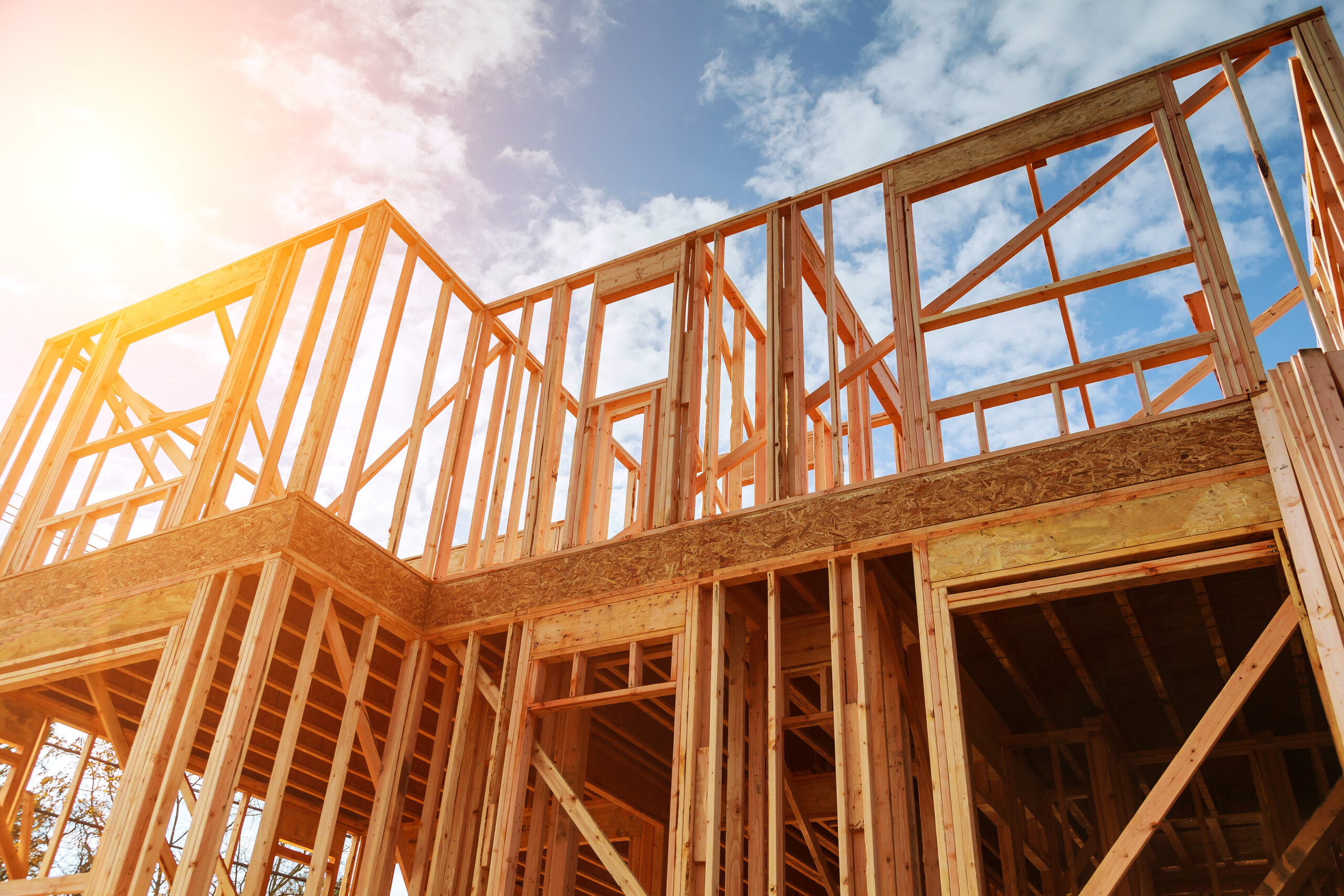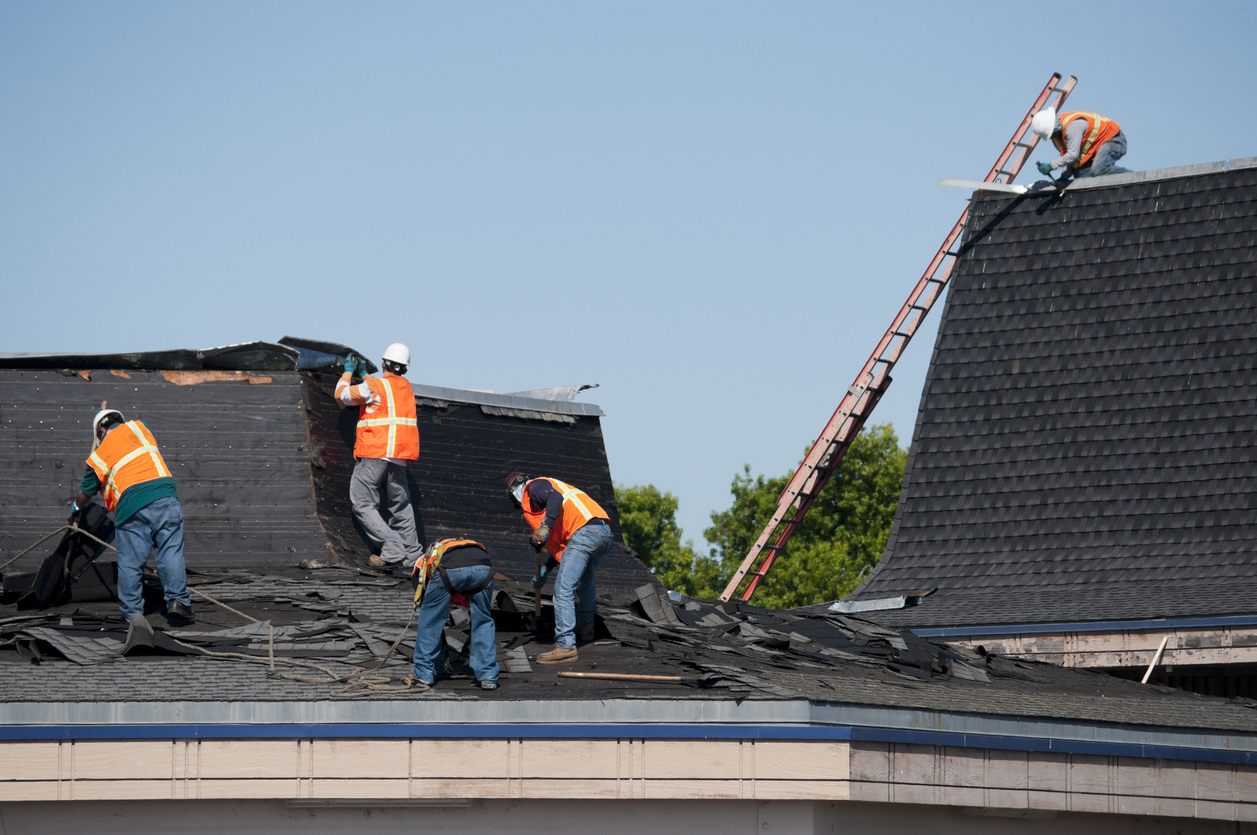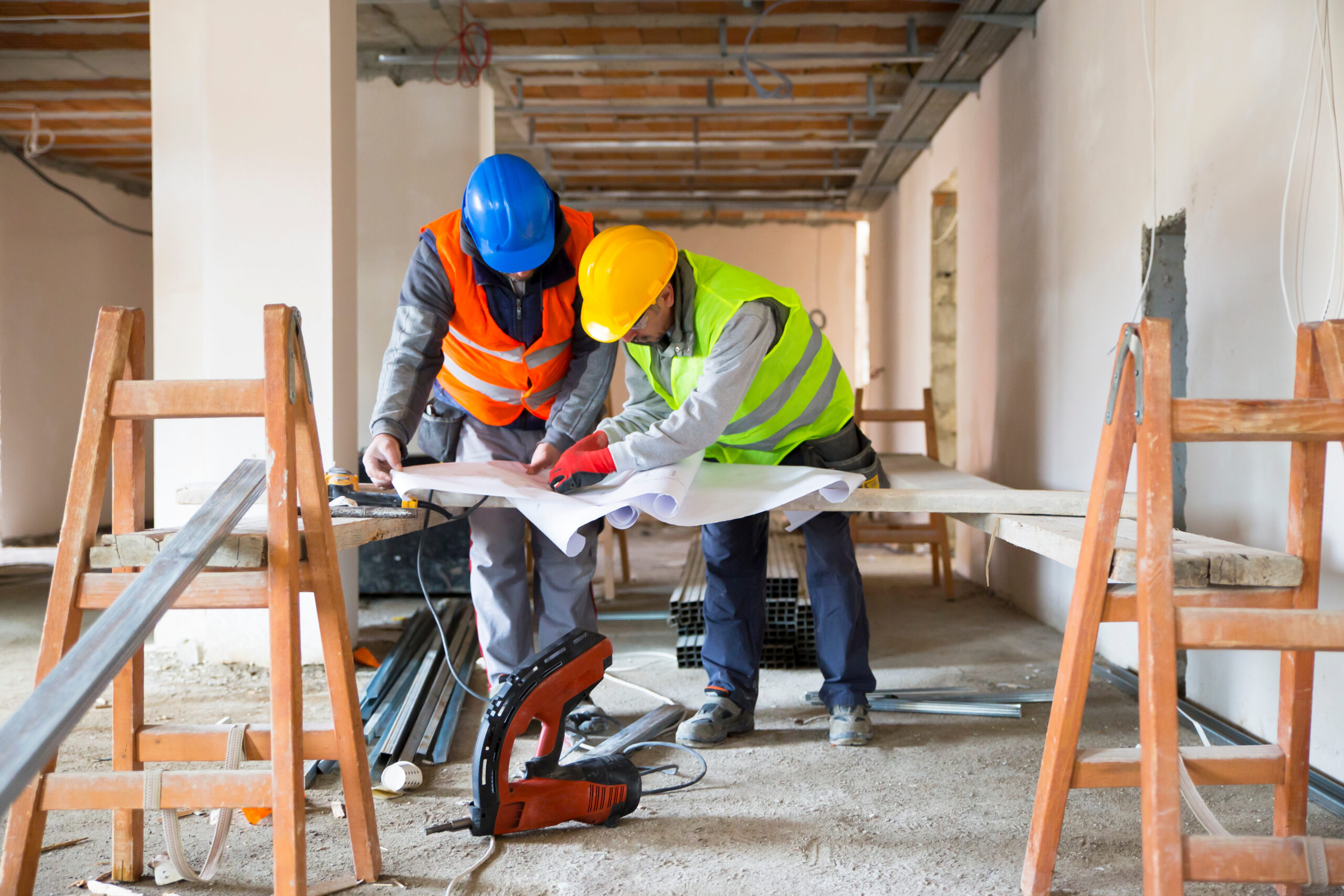Expert Disaster Reconstruction Services
The restoration experts of FLEET Response’s local companies can handle some amazing challenges, but sometimes your house is just so badly damaged that it needs to be torn down and rebuilt. This may mean tearing down some sections to be rebuilt, but it might also mean total reconstruction. This is not a decision to be made lightly, and it’s important to make it in consultation with a restoration expert who can let you know, realistically, what can be restored and what will have to be reconstructed.
At FLEET Response, we understand that this can be an emotional decision. Your home holds so many memories that it can be hard to say goodbye to it, even when you know it’s the right decision. Whatever decision you make, the experts at our local companies are there to help.
FLEET Response’s local companies have teams of experts in all stages of the reconstruction process. Starting with a 24/7 emergency response, they know how to quickly coordinate the project, from board-up through demolition to reconstruction to the final inspection. You’ll have just one point of contact through the entire project, making it easy for you to say what you want and get it done. Plus, our local companies coordinate with your insurance company to help you get the full compensation you’re due under the terms of your coverage. Please contact us at 844-967-4911 today to start the reconstruction process so can be back home as soon as possible.
Commercial Reconstruction
When your commercial property suffers catastrophic damage that requires a partial or complete reconstruction, you can’t wait around. Every day of lost production can be a significant blow to your profits. Your customers who depend on you may not be willing or able to wait for a prolonged period of closure. At FLEET Response, we understand how this type of property loss can affect your business, and we’re here to help you and your employees get back to work as quickly as possible. With 24/7 emergency response restoration services, our local companies respond rapidly to your disaster damage. A team of experienced technicians will arrive onsite quickly to assess the state of the property so you can begin planning for your next steps.
Choose FLEET Response as your trusted partner for commercial reconstruction services. Our hand-picked local companies allow us to deliver quality reconstruction services at every step of the process, from initial inspection through your final move-in. We know that time is of the essence, and we utilize the best techniques to ensure quick, quality reconstruction.
Learn more about our commercial reconstruction services.
What Is Reconstruction?
Reconstruction is the process of rebuilding a damaged structure after a destructive event, such as a fire, flood, or major storm. Reconstruction differs from restoration in that some or all of the building has either been demolished by the destructive event or it will have to be demolished because it is no longer safe and/or habitable.
Depending on how your house is built and the extent of the damage, it might be possible to perform a partial reconstruction: tearing down damaged parts of the house, while leaving other parts intact. However, it is sometimes necessary to perform a total reconstruction: tearing down the entire house and rebuilding it.
Reconstruction for All Situations
FLEET Response’s local companies can handle reconstruction related to almost any type of disaster. The most common disasters that require reconstruction include:
- Fire, including wildfires
- Flood
- Major storm damage, including tornadoes and hurricanes
- Earthquake damage
Fire Damage Reconstruction
Fire is one of the most destructive disasters that can strike your home. Fire can destroy any housing material, but it feeds on wood, the major structural material in most homes. Even if a house is still standing after a major fire, it will be badly weakened in any section where the fire took hold. If you live in a wooded area, wildfires can devastate everything in their path, including your home.
Once the fire is extinguished, the water used to put it out shifts from ally to enemy, creating water damage everywhere it touched.
It is highly likely that your home will need at least partial reconstruction after major house fire damage.
Flood Damage Reconstruction
Flash floods – especially those related to broken dams – can scour the land of all construction. You might return home after an evacuation to see your entire neighborhood is just gone as if swept away by a giant hand.
Even when your house is still standing, it might not be usable after a flood. Depending on how long the house was flooded, rot might have already set in to the structural supports, making the construction unsteady and unsafe.
It should come as no surprise that reconstruction after flood damage is often necessary.
Storm Damage Reconstruction
Major storms can devastate your home with a combination of wind and water. Devastating straight-line winds can blow some structures down, as well as knocking down large trees onto your home. Tornadoes can tear many buildings apart, and lift and throw massive objects to cause further destruction. Hurricanes can bring a combination of destructive winds, rain, and even a flooding storm surge if you’re near the coast.
Often, homes can be restored after storm damage, especially if they’re modern homes built to withstand hurricanes, but in some cases the damage is too severe for restoration. In these instances, reconstruction may be necessary as part of the storm damage restoration process.
Earthquake Damage Reconstruction
Earthquakes are common only in some parts of the country, but when they strike, they release catastrophic destruction. Homes built to withstand earthquakes will have better odds of surviving the event, but older construction is likely to need reconstruction because it literally got swept off its feet, which might mean it’s no longer stable or safe.
How to Decide between Restoration and Reconstruction
Making the decision to tear down your home and start building again can be a hard one. However, you don’t have to make the decision alone. When you contact FLEET Response, one of our local companies can be there to advise you on how to make the right decision.
Here are some of the factors that you need to consider, and that our team will be able to help you evaluate.
Safety
Safety has to be one of your top concerns whenever making restoration decisions. This is also a place where you need a qualified expert to advise you: you need someone who can look at the damaged structure of your house and determine whether it can be made safe to live in. Our local company’s team will help you understand safety factors related to:
- Structural integrity
- Electrical systems
- Chemical and biological contamination
- Risk of unknown dangers
If the house is likely to collapse or catch on fire if restored, reconstruction is the right choice. Sometimes specialty cleaning can eliminate dangerous contamination, but other times it’s best to rebuild.
Finally, there are sometimes too many unknowns hidden behind damaged walls, and the only way to reveal the truth is to tear them down, at which point it’s smartest to just count on reconstruction.
Cost
After safety, most people look to the cost of a project to make decisions about whether restoration or reconstruction is the best choice. In most cases, restoration costs a fraction of reconstruction. However, for badly damaged structures, it may be more expensive to restore them than it is to just tear it down and start over.
An important factor in cost is your insurance coverage. Sometimes insurance will cover restoration but not reconstruction. FLEET Response’s expert local companies have extensive experience working with insurance companies, and they’ll be able to tell you if insurance is dictating one decision or another.
Convenience
Sometimes, restoration can be a delicate, time-consuming process. It’s possible, and even cost-effective to safely restore the building, but it requires a precise set of steps. On the other hand, reconstruction can be straightforward: tearing a structure down and rebuilding is a process that FLEET Response’s local companies know how to do quickly and efficiently. In this case, reconstruction might make more sense.
Code Upgrades
Whenever your property is significantly damaged, restoration may have to bring the structure up to the modern standards of the building code. This can greatly complicate the restoration process, and, in some cases, it might make it essentially impossible or exorbitantly expensive to restore the old structure. In these cases, it might make more sense to go ahead with reconstruction instead.
Legal Restrictions
Sometimes there are legal restrictions on whether you are allowed to restore or rebuild a house. If you occupy a historic structure, for example, you may not be allowed to tear it down and reconstruct it. You might be forced to restore it. On the other hand, there are increasing restrictions on whether you’re allowed to rebuild in areas that are prone to disasters. For example, flood zones, barrier islands, and even wildfire areas can have restrictions on whether you can rebuild after tearing down your house. Again, this might force you to go the restoration route if you want to continue using your property.
Preference
Weighing all the above factors, you still have a choice in the matter (except in the case of legal restrictions). If you decide that you would rather restore a property than reconstruct it or vice versa, then that is your choice. At FLEET Response, our expert teams are here to help you get your life back on track after a disaster, and we want you to have input about what shape that should take.
Reconstruction Services We Offer
FLEET Response’s local companies can provide a full suite of reconstruction services, including:
- Board-up services
- Building and property demolition
- Debris removal
- Inspection and assessment
- Design and planning
- New construction
- Interior and finishing work
- Storage, cleaning, and restoration of contents
We’ll discuss these services in more detail as part of the reconstruction process.
The Reconstruction Process
Reconstruction is a complicated process, but one that FLEET Response’s local companies are well-equipped to handle. Here is an idea of what you can expect from the reconstruction process, although not every reconstruction will follow this sequence.
Though we’re listing this as a sequence, our local companies use teams working in tandem to speed the process whenever possible.
Inspection and Assessment
Before any reconstruction work, our local companies will complete a comprehensive inspection and assessment of the property. This will confirm whether it’s better to restore the property or tear down the structures and rebuild.
Board-up and Content Salvage
Next, our local companies will want to secure the property against vandals, thieves, and animals. Even if there’s nothing in the property to protect, it’s important for legal reasons in most communities. At this point, they will pull out any contents that are worth restoring. Even when the building is a total loss, the contents may not be.
Design and Planning
Next, the contractors at our local companies will work with you on designing the new construction. They may reference original construction blueprints if available and useful. They’ll also make sure that the new plans are up to current code standards. You will have the ability to look over and approve all the plans before reconstruction begins.
Our local companies will also pull all necessary permits for reconstruction.
Demolition and Debris Removal
With the plans for reconstruction in place, our local companies will demolish the old structure. By this point, they will know if anything is being preserved, or if the entire structure needs to go. Then they will clear debris from the property.
Structural Work
Structural work is the main framework of the building. It’s the studs, joists, and rafters. This can go up quickly and set the stage for the rest of the construction. In some cases, this may include the removal and repouring of the foundation.
Interior Work
After the main structure is complete, it’s time to build the interior. This includes all the functional systems, such as plumbing, electrical, HVAC, and any built-in data components, if, for example, you want to have wired internet and/or built-in wi-fi. It also includes insulation, drywall, flooring, and more.
Finishing Work
Finishing work is the last decorative touches for the interior and exterior. This includes painting, trim, cabinetry, countertops, and any built-in appliances. This is also the time to complete any exterior work required, either because of the disaster, reconstruction damage, or upgrades you choose.
Inspections and Approvals
Although inspections happen at every step, your property will need to go through a final inspection before it’s time to move in. Our local companies’ experts will perform the reconstruction to code, so the inspection step won’t hold up their schedule – or yours.
Move-in of Restored Contents
Depending on the state of any salvaged property, its restoration may be complete before the house is ready to receive it. If that’s the case, our local companies can store it until reconstruction is complete. Once the reconstructed property is ready for move-in, they will take any restored contents and move them back into the house.
Then you can have any new furnishings delivered and move back in with your family.





